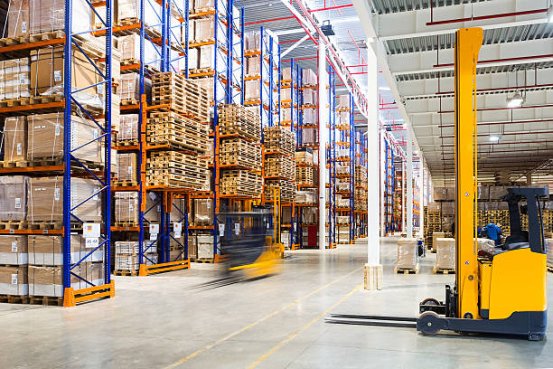Maximizing Warehouse Efficiency with Smart Racking Systems
Efficient storage is essential for businesses aiming to cut costs and boost performance. Warehouse racking systems offer a structured and accessible way to organize goods, improving productivity while maximizing space usage.
Efficient storage is essential for businesses aiming to cut costs and boost performance. Warehouse racking systems offer a structured and accessible way to organize goods, improving productivity while maximizing space usage.

Understanding Warehouse Racking
Warehouse racking refers to engineered shelving structures designed to hold products safely on pallets or shelves. These systems consist of upright frames and horizontal beams, creating multiple storage levels that keep inventory orderly and easy to access. As the foundation of streamlined warehouse operations, racking ensures goods are both secure and readily available when needed.
Common Types of Warehouse Racking Systems
Warehouses vary in layout, workflow, and inventory type, which requires tailored racking solutions. Popular options include:
1. Selective Racking
The most widely used option, offering direct access to each pallet for fast retrieval.
2. Drive-In/Drive-Through Racking
Allows forklifts to enter rows of stacked pallets, maximizing high-density storage.
3. Push Back Racking
Pallets sit on inclined rails, enabling dense storage while maintaining relatively easy access.
4. Pallet Flow Racking
Gravity-fed rollers move pallets forward, ideal for high-volume, fast-moving stock.
5. Cantilever Racking
Suited for oversized or long products such as timber, pipes, or furniture, with open fronts for easy loading.
6. Double-Deep Racking
Stores two pallets back-to-back, increasing density but requiring specialized forklifts.
How Racking Systems Improve Efficiency
By taking advantage of vertical space, warehouse racking prevents wasted square footage and organizes inventory more effectively. Well-structured shelving shortens the time workers spend locating products, speeds up order fulfillment, and minimizes downtime. In addition, secure racking reduces product damage, lowering costs tied to breakage and mishandling.
Key Benefits of Warehouse Racking
Implementing warehouse racking brings a wide range of advantages:
1. Customizable
Adaptable to the size, shape, and layout of any warehouse.
2. Flexible
Adjustable systems support changing product types and stock levels.
3. Space Utilization
Maximizes use of both vertical and horizontal space.
4. Safety
Organized storage reduces workplace accidents and product loss.
5. Accessibility
Quick location and retrieval of items streamline daily operations.
Ensuring Safety in Racking Operations
Maintaining safety in warehouses requires consistent attention to proper racking use. Key practices include:
-
Routine Inspections – Look for damage, corrosion, or weak points in racks.
-
Respecting Weight Limits – Prevent overloading to avoid collapse.
-
Staff Training – Teach safe handling, loading, and unloading procedures.
-
Clear Aisles – Keep pathways free of obstructions to improve safety and access.
-
Scheduled Maintenance – Regular upkeep prevents costly incidents and prolongs rack life.
Choosing the Right Racking Solution
Selecting the correct system can transform warehouse operations. Businesses should evaluate inventory size, handling methods, and layout before making a decision. Expert consultation and careful planning ensure that the chosen system supports current storage demands and can scale with future growth.
Final Thoughts
Investing in racking is more than simply adding shelves—it is a long-term strategy that enhances efficiency, improves workplace safety, and maximizes storage potential. With the right solution in place, companies can reduce costs, speed up order processing, and create a more productive warehouse environment.
For further resources and detailed insights into warehouse racking, visit:
https://www.camcode.com/blog/what-is-warehouse-racking/
https://www.shipbob.com/blog/warehouse-rack/
https://www.exotec.com/types-of-warehouse-racking-differences-and-benefits/
